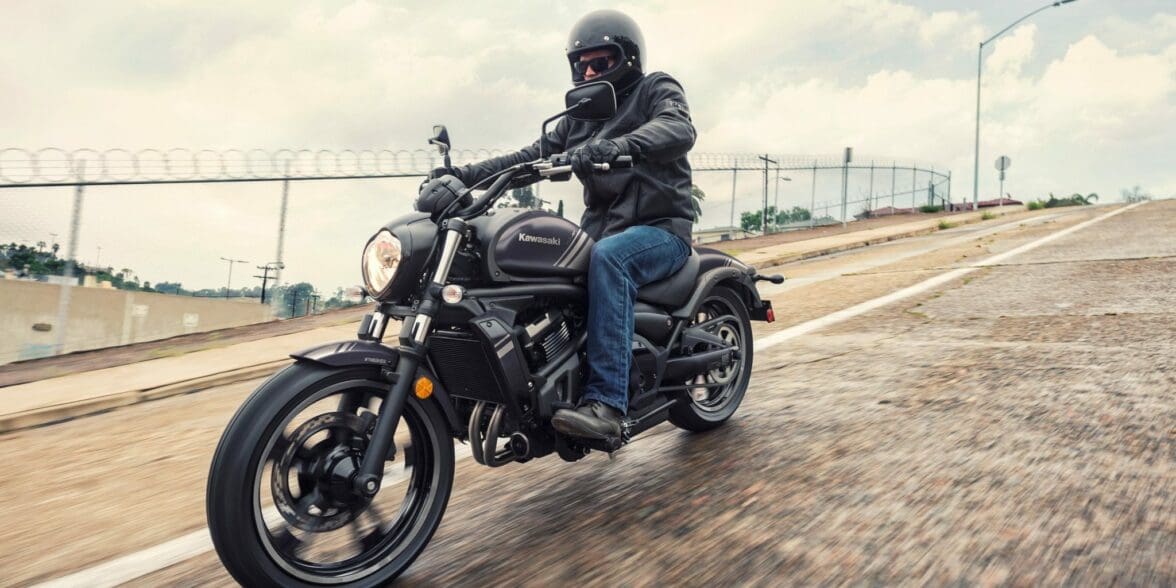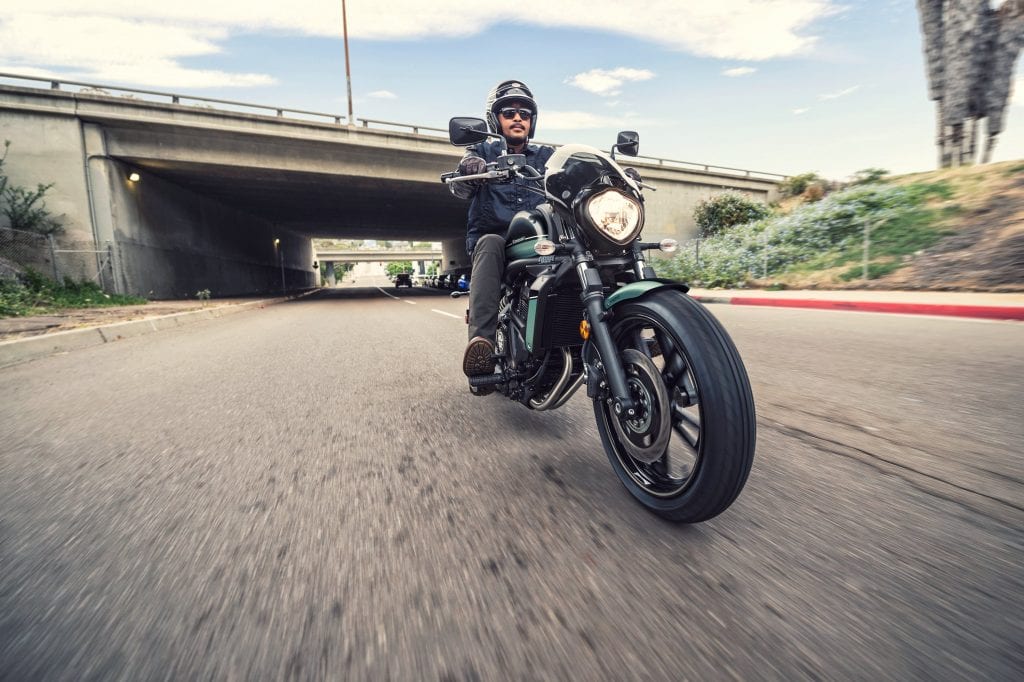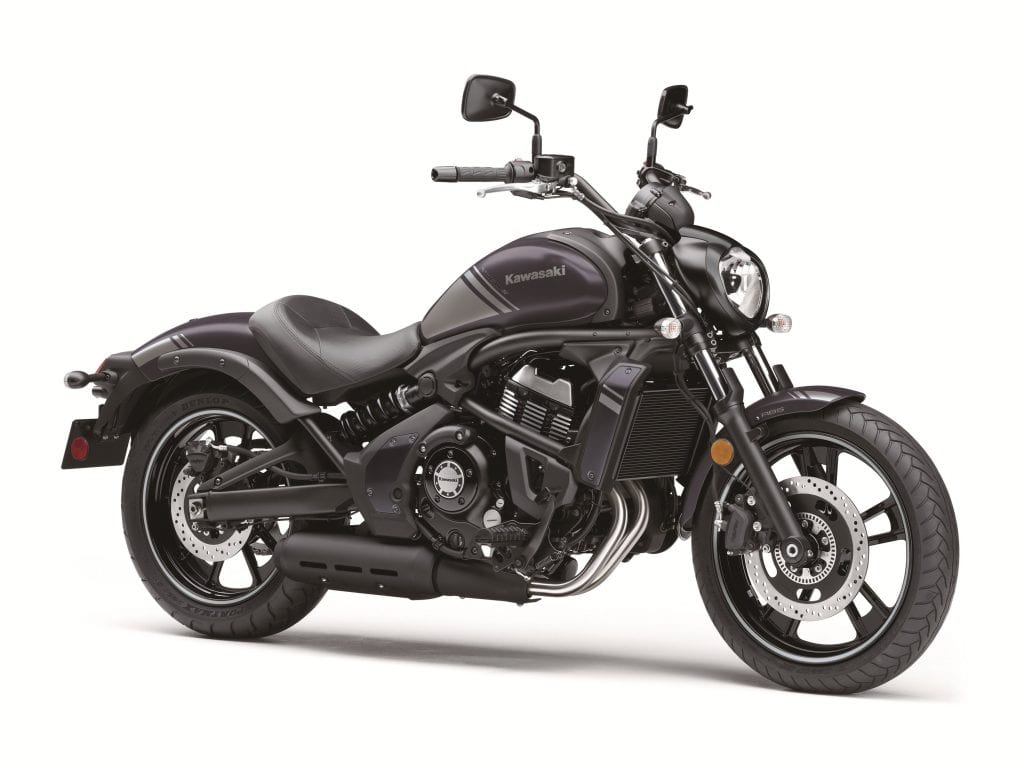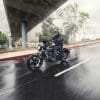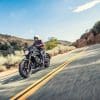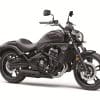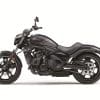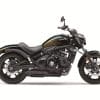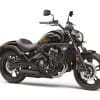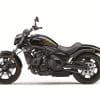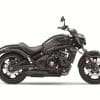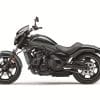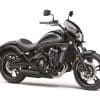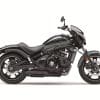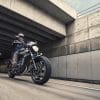2020 Kawasaki Vulcan S and Vulcan S Cafe
Contents
The 2020 Kawasaki Vulcan S is an interesting take on a cruiser, being designated as a sport cruiser in official documentation. Powered by the 649cc DOHC liquid cooled parallel twin found in the Ninja 650, it has been retuned and optimized with a heavier flywheel and redesigned air intake to give the Vulcan S more low end and midrange grunt. The engine produces 54 crank HP and 46 lbs-ft of crank torque, with the torque band starting at about 3000 RPM.
One of the most intriguing features of the Vulcan S is that it has what Kawasaki term as an “ergo-fit” system, where there is mild customization of three different footpegs, three different seats, and three different handlebar options that you can select from when purchasing. There is also a Cafe variant, which adds a Cafe Racer-type cowling to the front of the bike and adds three tone paint, while the rest remains the same as the base model.
The 2020 Kawasaki Vulcan S non-ABS starts at $7,099 US, with the ABS version starting at $7,499 US/$8,399 CA. The 2020 Kawasaki Vulcan S Cafe ABS starts at $8,099 US/$8,799 CA.
On this page: we’ve curated specs, features, news, photos/videos, etc. so you can read up on the new Kawasaki Vulcan S in one place.
Model Overview
General Info
- Price: $8,099 US/$8,799 CA
- Key Features:
- Abs (Anti-lock Brake System)
- Economical Riding Indicator
- LED Lighting
Key Specs
- Engine type: 649cc,4-stroke, 2-cylinder
- Power: 54 Hp
- Wet weight: 502 lb
- Seat height: 27.8 in
Key Competitors
2020 Kawasaki Vulcan S Specifications
ENGINE |
||
| Engine | 649cc, 4-stroke, 2-cylinder, DOHC, liquid-cooled | |
| Power | 54 Hp | |
| Bore x Stroke | 83.0mm x 60.0mm | |
| Compression Ratio |
10.8:1
|
|
| Fuel System | DFI® 38mm throttle bodies (2), with sub-throttle valves | |
| Starter | Electric | |
| Lubrication | Forced lubrication, wet sump with oil cooler | |
DRIVETRAIN |
||
| Clutch | Wet multi-disc, manual | |
| Transmission | 6-speed with positive neutral finder | |
| Final Drive | Sealed Chain | |
CHASSIS |
||
| Suspension Front | 41mm telescopic fork/5.1 in | |
| Suspension Rear | Lay-down offset rear shock with linkage and adjustable preload/3.1 in | |
| Brakes Front |
Single 300mm hydraulic disc
|
|
| Brakes Rear |
Single 270mm hydraulic disc
|
|
| Tires Front | 120/70×18 | |
| Tires Rear | 160/60×17 | |
| Fuel Tank Capacity | 14 L (3.7 US gal.) | |
| Color |
Phantom Blue/ Ebony
|
|
ELECTRICAL |
||
| Ignition | TCBI with digital advance | |
| Spark Plugs | ||
| Headlight | LED | |
| Tail Light | LED | |
DIMENSIONS |
||
| Overall Length | 90.9 in (2,305 mm) | |
| Overall Width | 34.6 in (880 mm) | |
| Overall Height | 44.5 in (1,130 mm) | |
| Wheelbase | 62 in (1,575 mm) | |
| Ground Clearance | 5.1 in (130 mm) | |
| Seat Height | 27.8 in (705 mm) | |
| Curb Weight | 502 lbs (227 kg) | |
WARRANTY |
||
| Warranty | 12 Month Limited Warranty | |
| Extension | ||
2020 Kawasaki Vulcan S Features
Dual Throttle Valves
Late-model sport bikes often use large-bore throttle bodies to generate high levels of power. However, with large diameter throttles, when a rider suddenly opens the throttle, the unrestricted torque response can be strong. Dual throttle valve technology was designed to tame engine response while contributing to performance.
On models with dual throttle valves, there are two throttle valves per cylinder: in addition to the main valves, which are physically linked to the throttle grip and controlled by the rider, a second set of valves, opened and closed by the ECU, precisely regulates intake airflow to ensure a natural, linear response. With the air passing through the throttle bodies becoming smoother, combustion efficiency is improved and power is increased.
Economical Riding Indicator
Using high-precision electronic control for engine management, Kawasaki models can achieve a high level of fuel efficiency. However, fuel consumption is greatly affected by throttle use, gear selection, and other elements under the rider’s control. The Economical Riding Indicator is a function that indicates when current riding conditions are consuming a low amount of fuel. The system continuously monitors fuel consumption, regardless of vehicle speed, engine speed, throttle position and other riding conditions. When fuel consumption is low for a given speed (i.e. fuel efficiency is high), an “ECO” mark appears on the instrument panel’s LCD screen. By riding so that the “ECO” mark remains on, fuel consumption can be reduced.
While effective vehicle speed and engine speed may vary by model, paying attention to conditions that cause the “ECO” mark to appear can help riders improve their fuel efficiency – a handy way to increase cruising range. Further, keeping fuel consumption low also helps minimize negative impact on the environment.
ABS (Anti-lock Brake System)
Kawasaki ABS systems use front and rear wheel sensors to constantly monitor wheel speed. Should information from either of the sensors indicate that wheel lock has occurred, the ABS ECU directs the pump in the ABS unit to modulate brake fluid pressure (releasing and reapplying pressure so that traction can be regained) until normal operation resumes. ABS offers rider reassurance that contributes to greater riding enjoyment.
ERGO-FIT®
Proper fit is key for rider comfort and control. However, the ideal fit varies from rider to rider, depending on their physical dimensions and riding style.
ERGO-FIT® is an interface system designed to allow riders to find their ideal riding position. Various points of the chassis interface (the handlebar, footpegs and seat, etc.) can be adjusted through a combination of interchangeable parts and parts with adjustable positions. This enables a wide range of riders to find a riding position that offers both comfort and control. Feeling at one with their machine, they will be able to experience how Kawasaki machines are fun and rewarding to ride.
*Adjustable parts and their range of adjustability vary by model.
2020 Kawasaki Vulcan S Photos
2020 Kawasaki Vulcan S Videos
Links
Kawasaki Official Websites


